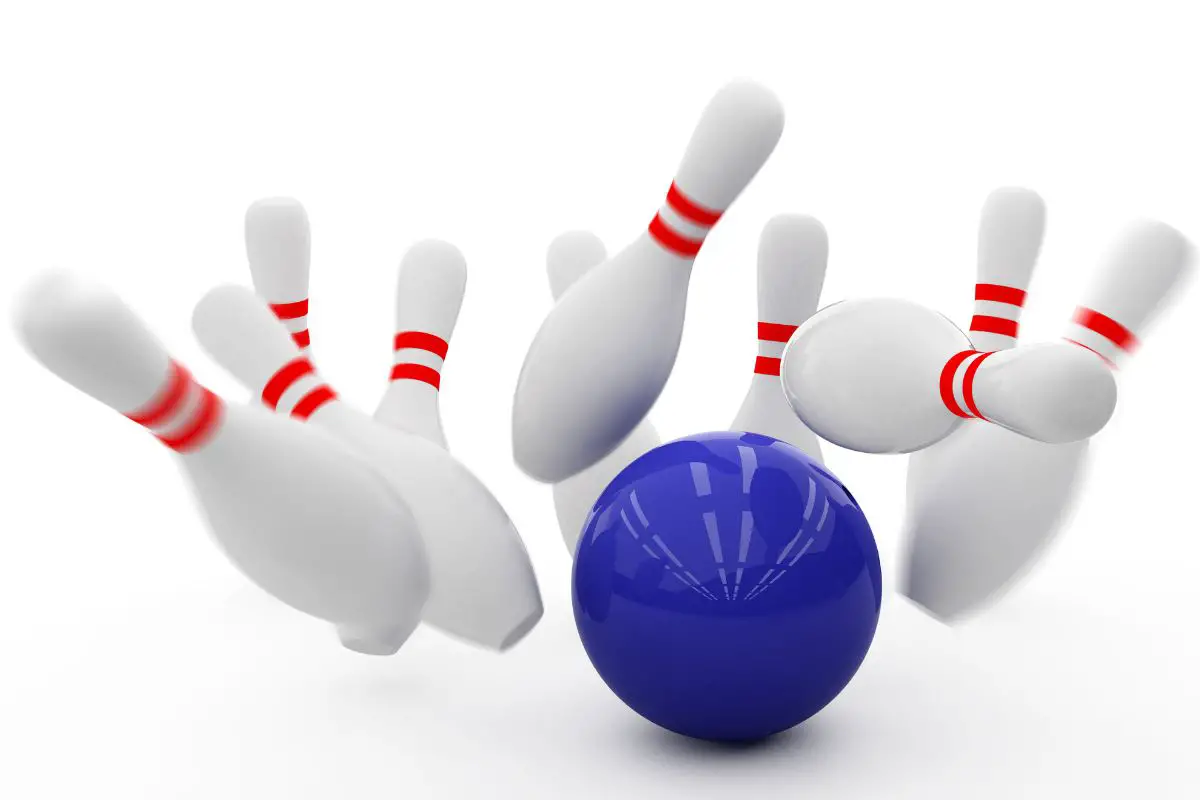Many letters and symbols in bowling can appear quite often to signify different things.
Terms such as buzzard, curtain, and deuce refer to entirely different things. However, their meanings can be picked up on and learned very quickly.

Single letters are a bit harder to decipher when they pop up on a scoresheet and can be very confusing if you’re not entirely sure what you did during the game and if it means something good or bad.
An ‘F’ is a common symbol in most bowling matches. However, it does signify something significant and is vital to know about so you can make the necessary changes to your game in the future and avoid it appearing on the scoresheet.
What Does An F Stand For?
If you see an F on the scoresheet or electronic scoreboard, a player has committed a foul during their turn. You won’t get any points for that delivery.
Therefore, while your delivery will still count for that frame, even if you were to hit a strike, the number of pins knocked down will be void and won’t contribute to your final score.
In a single frame, if you foul on your first throw, you will get another chance to score some points on your second throw. If, however, you foul on both or if you foul on your second ball, then your turn will automatically be over.
What Is A Foul In Bowling?
There are a few ways a player can commit a foul. The most common offense is if a player crosses the foul line.
This is the line that separates the lane itself from the approach and is there to let a player know that they need to release a ball behind the line for it to be eligible to score points.
If a player crosses or even makes contact with the foul line during a turn, this can count as a foul and will be listed as an ‘F’ on the scoresheet.
If a player crosses the foul line, their turn will still count, but the number of pins they knocked over will not, and they will not be awarded any points.
In some bowling games, a shot clock may also be used to ensure all bowlers throw their balls promptly so they don’t take too long. This is often in larger bowling centers or more competitive games.
Shot clocks are usually set to 30 seconds, and if a player fails to physically release their ball by the time the shot clock sounds off, their turn will be deemed void, and they will receive an ‘F’ on the scoresheet.
A few other illegal offenses can remove a player’s points and be classified as a foul.
For example, if the ball somehow managed to hit another player and was thrown purposefully by the bowler, then this would be deemed a foul.
Similarly, if a ball leaves the lane before hitting the pins, or if the pins fall for a reason other than the ball, this would be a foul.
Legal Delivery

It is also important to note that a foul can only be called if a player has made a legal delivery.
This means a bowler must cross the foul line and also release the ball for the foul to count. No foul would be called if they were not to release the ball.
This is in play because if a player has noticed they may have taken a step a little too big and have crossed the foul line, they can keep hold of the ball and try again without incurring any penalties.
In some cases, if you are in a more competitive setting or if the foul is just too hard to call, the team captains may be called over to make a decision, or if it is incredibly unclear, then the bowler may be asked to throw a provisional ball which is then submitted to the league for evaluation. However, this usually only happens in tournaments.
What About A Foul In The Tenth Frame?
Because the tenth frame allows players to throw three times, fouls can work differently but still follow the same principles.
If a player commits a foul on their first throw but then knocks down all the pins on their second throw, this will count as a spare, and they will get a third turn to throw.
If a foul is committed on the third and final throw, only the score of the first two throws will be considered.
If you knock down a few pins on your first throw but then score a foul on your second throw, you will have no more throws.
Ways To Avoid A Foul
Some key pointers to avoid scoring a foul include keeping a reasonable distance from the foul line when you prepare a shot, preferably 3 – 4 inches.
Also, try not to make your strides too big if you are trying to get some power on the ball, as it can make it far easier to step over the foul line, most of the time without even noticing.
Also, while it can be a good idea to get as close to the foul line as possible to pick up some speed on a ball, try practicing your strides so you land just before the line itself but still have an excellent rhythm for throwing a ball at a fast pace.
Summary
An ‘F’ is a symbol that every bowler should always try to avoid getting on their scoresheet during a game since, while it will not make or break a game and won’t disqualify you entirely, it can cost you a lot of points if you do step over that foul line.
- A Comprehensive Guide to the Top Bowling Movies of All Time - December 23, 2023
- Bowling Shoes Selection Guide: How to Choose the Right Fit - September 27, 2023
- Bowling Ball Buying Guide: How to Choose the Right Ball for You - September 23, 2023









